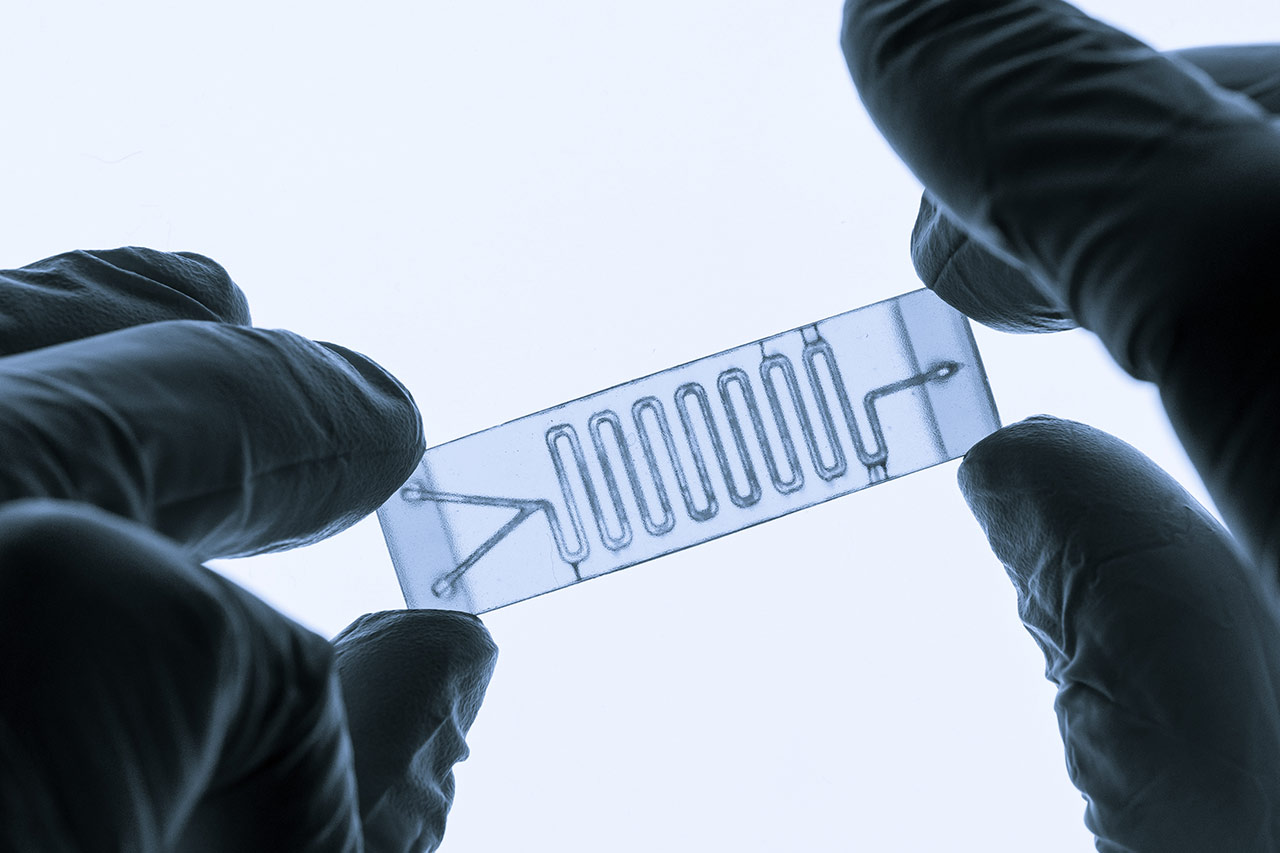Organ-on-a-chip: in vitro revival of preclinical trials?

Preclinical testing is perceived as an unavoidable and problematic step in drug development, with the major disadvantage of provoking ethical controversies related to animal welfare, while not always guaranteeing relevant results for manufacturers. Although it has long seemed unavoidable, the new organ modeling technology, “Organ-on-a-chip”, now seems to be on the way to bringing about innovation to this key stage. Alcimed, a consulting company specializing in innovation and the development of new markets, focused on the ramifications of this macro-consequential micro-technology.
An ambitious and complex modeling of the human organs
When cells of the human body are extracted for culturing, they inevitably lose the properties associated with their interactions with their original environment. As a result, it is often impossible to induce all the behaviors that cells could have exhibited in the human body through experiments carried out on cells in culture. To overcome this difficulty, the concept of an interconnected architecture of different cell cultures in order to recreate their specific environment was born: the organ-on-a-chip. It is defined as an integrated circuit of cell cultures that replicates the functions, mechanisms and physiological responses specific to the organs of the human body. In view of these qualities, the organ-on-a-chip represents a major area of interest for all sectors facing challenges in conducting human trials, whether they are related to health risks or practical issues.
While the logical ultimate goal of the concept seems to be the construction of a “Human-on-a-a-chip”, resulting from the networking of the various “Organs-on-chips”, the stakeholders involved in this new technology are already looking beyond and hoping to achieve a sufficient degree of customization to deserve the name “You-on-a-chip”. However, before each person can be provided with their in vitro copy, important problems remain to be solved. The design of “Organs-on-chips” requires a detailed understanding of the complex interactions taking place in the human body and then the ability to model them. This makes the development of this technology a real challenge: it is at the interface of many disciplines and simultaneously requires them to push their limits.
A much-anticipated upheaval in preclinical trials
The drug discovery process has grown to be problematic: it is long, costly, and fails much more often than it succeeds. While many factors are put forward to explain this state of affairs, one seems to stand out particularly: preclinical trials. The tools used to assess the effects of drugs in preclinical trials lack effectiveness and precision and generally do not anticipate how the human body will react. At the moment, two methods coexist: conventional cell culture and animal testing. The first, neglecting the interactions of cells with their original environment, struggles to provide convincing results. The second, while it makes it possible to assess the reactions that a complex organism may present, is often unable to accurately predict reactions specific to the human body and raises major ethical questions.
The organ-on-a-chip is positioning itself as the new method that promises to improve the efficiency of preclinical trials and, in the process, revolutionize the drug discovery process. In addition to directly studying the dynamic response of the organ to a drug, organ-on-a-chip would also make it possible to segment the results by type of person, which was previously unimaginable. This segmentation would allow researchers to analyze the influence of variables such as age, gender, or geographical distribution on drug efficacy as early as in preclinical trials. Such work would be carried out using machines, which are currently under development, automating both the conduct and analysis of the tests. Such trials would thus be faster, more reliable and give access, from this stage, to a much better understanding of medicines.
Achievements of interest
Despite the undeniable complexity of development, many concrete achievements demonstrate that organ-on-a-chip is already a technology mature enough to drive real progress. For example, the heart, kidneys, lungs or liver – among other organs – have all been successfully modelled. Many stakeholders have independently embarked on these achievements, and some have been able to create partnerships that reflect the interest generated by this new technology. For example, Mimetas has engaged with Janssen, Biogen and Abbvie to develop neurovascular organs-on-chips to study Alzheimer’s disease, while TissUse is collaborating with Bayer to create a liver-endocrine multi-organ-on-chip system to evaluate the toxicity of certain drugs. Finally, Emulate, the pioneer in the sector, has signed many partnerships based on the technology it develops, including Roche, AstraZeneca and Takeda, and is currently in discussion with the FDA to determine the extent to which its on-chips organs could be used as toxicological test platforms. In addition to these pharmaceutical companies, the technology could be of interest to other players such as those in the agri-food industry, the cosmetics industry and chemical manufacturers (e. g. household) for toxicity tests or even to certain players in the nuclear industry wishing to assess the impact of radiation on the human body.
“In addition to preclinical trials, organ-on-a-chip is also a decisive asset for personalized medicine. The ability to get an idea of how a specific patient will respond to a given therapy is a major step forward.” concludes Delphine Bertrem, Head of the Health Business Unit in Paris.
Do you have an exploration project?
Our explorers are ready to discuss it with you